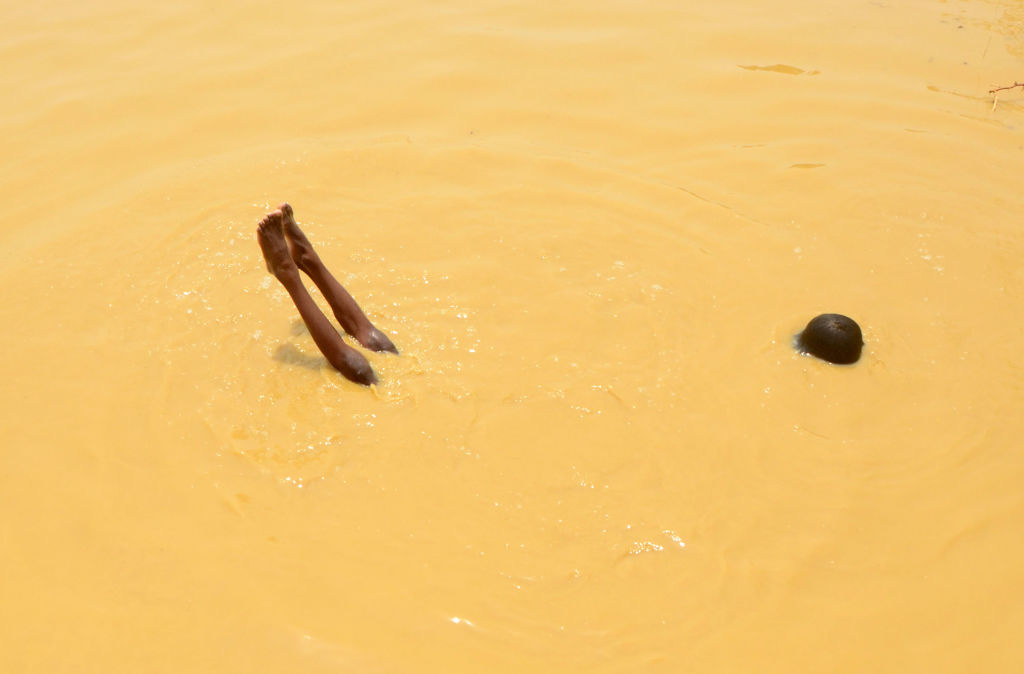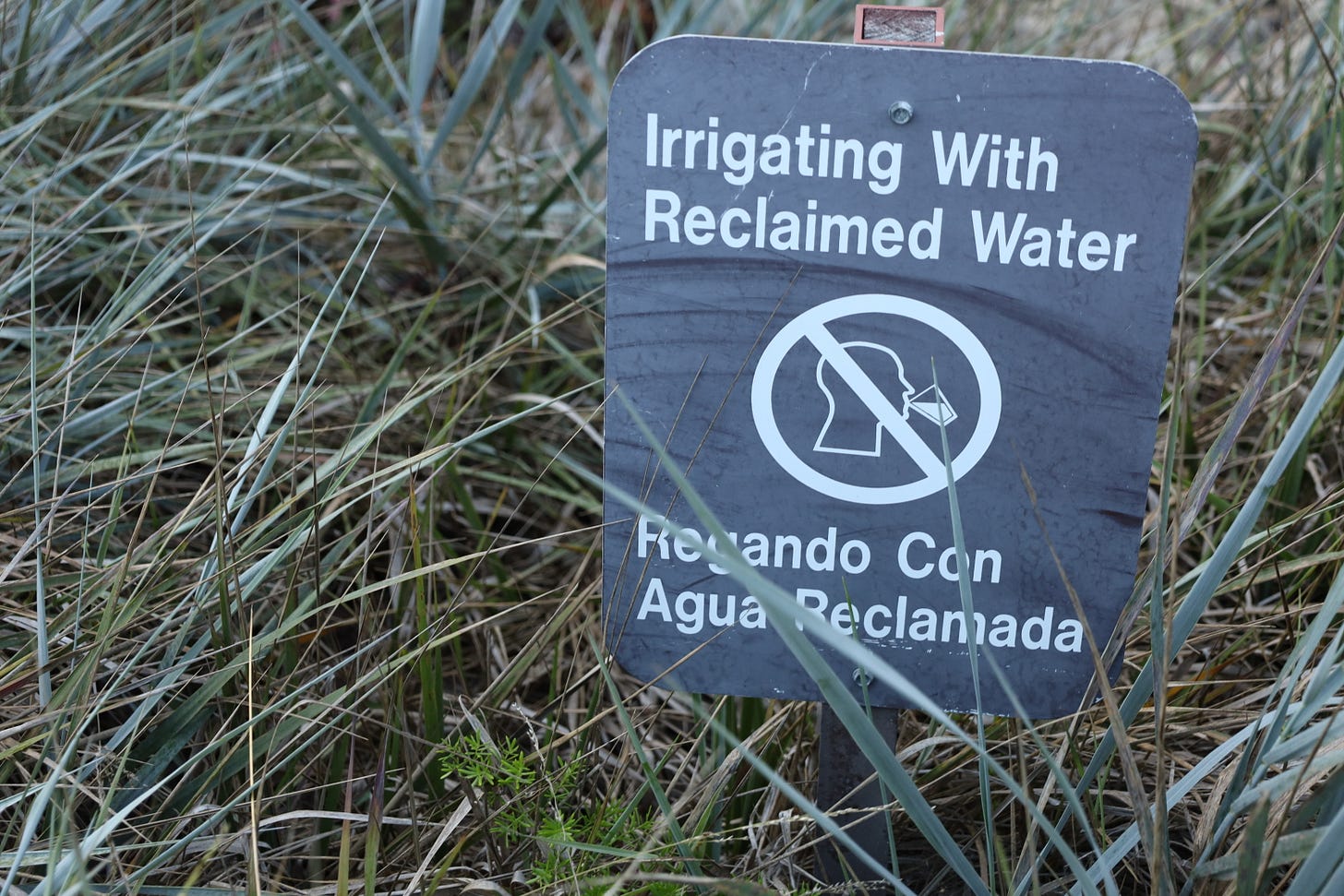Water, Water, Everywhere But…
How farming practices are exacerbating India’s groundwater crisis
Judging by the discussions on the first day, the big themes at this year’s International Journalism Festival in Perugia are about collaboration and innovation in the face of unprecedented assaults on journalists and media freedom.
The headwinds are definitely considerable and range from financial to political. At the same time - and perhaps precisely because of increasing authoritarianism in the world - there is a wealth of rich material for journalists to write about. But it’ll get increasingly harder to do it alone. It’s that old, clichéd adage of how we’re stronger together.
So I’m grateful to Jon Allsop for writing about how the earthquake in Myanmar was the latest challenge for an already overstretched exiled media, and the Columbia Journalism Review for publishing it. It’s a good piece and I’m not just saying because he quoted me.
I also wrote a little rant for The Guardian about the quake and my conflicted feelings on being repeatedly told how resilient we are. For those who want to donate to relief efforts, last week’s newsletter has a list of groups doing good work in Myanmar.
I see collaboration as amplifying each others’ voices too, and that’s why I’m featuring the work of a group of Indian journalists this week.

Since the beginning of this year, I’ve been mentoring five Indian journalists who are part of the Environmental Data Journalism Academy, a months-long fellowship programme of Internews’ Earth Journalism Network and Thibi, a data consultancy.
They were working on stories on India’s groundwater crisis. Unsurprisingly, a lot of that is linked to agricultural policies and practices. So they ranged from the impact of sugarcane, cotton, and basmati production to systemic issues like why Indian farmers are addicted to monocropping.
In some ways this mentoring was a lighter lift, because when I turned up, the journalists had already decided on their angles, completed the data analyses, and were beginning to write their pieces, thanks to other mentors. So my role was to shape the structure of the final article(s), tighten their prose, and help them when they got stuck.
Four journalists have published their pieces and the last has filed theirs. I’m very proud of the efforts they’ve put into the stories, which zeroed in on India.
But the articles also provide food for thought on the broader topic of water security, which is a universal concern, especially since we’re sleepwalking into a water crisis.
Roughly half of the world’s population is already experiencing severe water scarcity for at least part of the year. Many of our fresh water bodies are polluted or suffering from saltwater intrusion as a result of sea level rise.
According to the 2023 edition of the UN World Water Development Report, water use has been increasing globally by roughly 1% per year over the last 40 years. This trend is expected to continue through to 2050.
A vast majority of this is for agriculture. The sector is responsible for 72% of freshwater withdrawals, followed by industry (15%) and domestic (or municipal) use (13%), said the 2025 report.
History has taught us that water has played a crucial role in the rise and fall of ancient civilisations like the Angkor, the Mayans, and the Indus Valley.
Their ability to control, manage, and utilise water, through intricate networks of reservoirs, canals and storage facilities, allowed them to build thriving societies. They helped agriculture to flourish all year round and sustain large populations.
It was also water - or the lack of it - that doomed them, according to research. A combination of misuse and environmental changes, such as shifts in monsoon patterns and severe, prolonged droughts, contributed to their decline.
Groundwater accounts for approximately 99% of the global volume of liquid freshwater (excluding glaciers and ice caps), said the 2022 UN World Water Development report, which focused on groundwater.
The EU, where groundwater provides 65% of drinking water, has called it “a precious resource hidden from sight”.
“Groundwater already provides half of the volume of water withdrawn for domestic use by the global population, and around 25% of all water withdrawn for irrigation, serving 38% of the world’s irrigated land,” the 2025 UN report added.
It is a finite resource, which means we need to protect it from pollution and overexploitation, but we are failing to do either. Agriculture is also a key source of pollution because of the chemicals we use in farming.
“Groundwater pollution is a virtually irreversible process: once polluted, aquifer zones tend to remain with polluted water,” the UN report warned.
Yet as these deeply-reported data stories from India show, the message is not getting through.
In a three-part series for Scroll.in, Aishwarya Mohanty looked at the main causes of groundwater depletion in India as well as the main barriers for change.
She dived into India’s embrace of monocropping (cultivating a single crop on the same field year after year, often in a defined row pattern) and why diversification efforts have not caught on in Part 1, the consequences of monocropping and how they are manifesting on the ground in Part 2, and how farmers’ addiction to chemical fertilisers “has taken a toll on soil health, groundwater reserves and rural livelihoods” in Part 3.
“In nearly 80% of India's states, just five or fewer crops have dominated the majority of farmland over the last decade,” she wrote, adding that in most states, water-intensive crops like rice or wheat occupy the largest share of the cultivated area.
This has robbed the soils of their fertility, depleted groundwater resources, and trapped farmers “in a vicious cycle of fertiliser dependence, deteriorating soil quality and decreasing crop yields”.
Aastha Ahuja also wrote a three-parter for NDTV.
Part 1 looked at how increased cultivation of more water-intensive crops have hurt farmers in Tamil Nadu, Gujarat, and the desert state of Rajasthan, burdening them with debt and increasingly frantic attempts to find water by digging more and deeper wells.
“On average, nine out of every 10 litres of the groundwater extracted is used for irrigation by states with the highest area of water-intensive crops like rice, wheat and sugarcane,” she wrote.
Part 2 focused on the how these states have depleted their soil health.
“Soil samples collected from Tamil Nadu, Gujarat and Rajasthan were found to be severely lacking both macro and micronutrients, especially nitrogen, potassium, iron and sulphur.”
The third and final part asked whether growing thirsty crops may be contributing to India’s stubbornly high malnutrition figures.
Anant Prakash’s piece in IndiaSpend is about how growing and exporting basmati, the long-grain rice considered a delicacy by rice lovers, has enriched the state of Punjab but at the expense of its groundwater levels.
“Punjab, once called India’s breadbasket, is now an exporter of water-intensive crops to countries that can afford them but can’t grow them” such as those in the Middle East and North Africa, the world’s most water-stressed region.
However, Punjab, which accounted for four out of every 10 bags of basmati rice produced in India in 2023, is a water-stressed state too and government assessments over the years have classified a majority of its groundwater as “overexploited”, Anant explained.
The findings raise questions about the long-term sustainability of growing basmati in Punjab but changing habits and policies are proving to be a major challenge.
In fact, “the areas under water-intensive crops including basmati rice, paddy, and wheat are growing instead of reducing”.
Nitesh Kumar’s story also traces how India is exporting water through a thirsty crop, but this time it is sugarcane that is wreaking havoc in Uttar Pradesh.
Published in Mint, the story (behind a paywall) traces how India became the second largest exporter of sugar and warned, “groundwater in Uttar Pradesh is at risk of complete depletion of aquifers within years unless a more sustainable way of producing sugarcane is adopted”.
“Despite the groundwater crisis, Uttar Pradesh alone has accounted for half of India’s sugar production over the last decade. In the decade to 2023, farmers in Uttar Pradesh extracted over three-fifths of its available groundwater.”
Farmers are already struggling with water scarcity, but don’t seem understand the scale of the crisis.
“Interviews with farmers conducted by Mint show they do not see the changes in groundwater levels as alarming yet and are unprepared for what may come if water levels continue to drop at the same rate.”
Thin’s Pickings
Everything I Never Learned About USDA’s Climate-Smart Commodities Program - Ambrook Research
Fascinating piece by Lela Nargi about the $3.1 billion Partnership for Climate-Smart Commodities (PCSC) program, which was shut down by the Trump administration as she was trying to figure out the “complicated and unwieldy program”.
She also spoke to farmers who had already shelled out their own hard-earned money for equipment and materials and are alarmed they will never be compensated for the costly expenditures.
Revealed: Meat Industry Behind Attacks on Flagship Climate-Friendly Diet Report - DeSmog
Clare Carlile on how PR firm Red Flag and meat and dairy industry group Animal Agriculture Alliance (AAA) possibly worked together to trash the EAT-Lancet report, which recommended rich nations to reduce red meat intake.
AAA has been featured before in Thin Ink, when I wrote about a Lighthouse Reports’ investigation into how the livestock lobby helped wreck Europe’s attempt to reform its animal welfare laws.
As always, please feel free to share this post and send tips and thoughts on bluesky @thinink.bsky.social, mastodon @ThinInk@journa.host, my LinkedIn page, or via e-mail thin@thin-ink.net.





